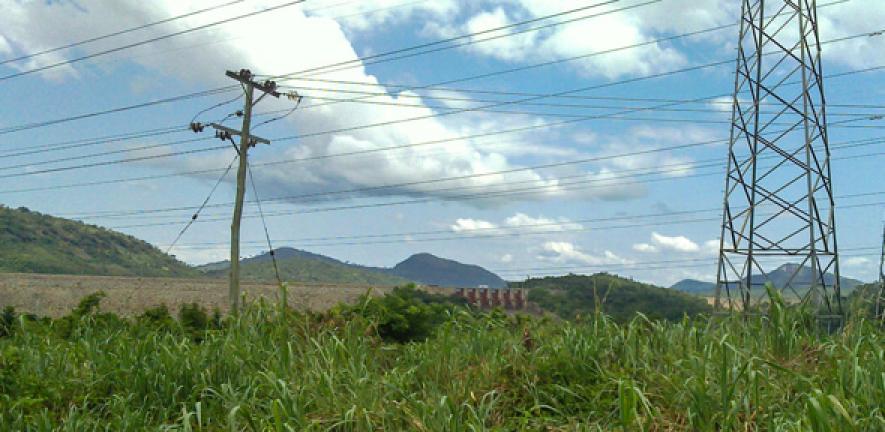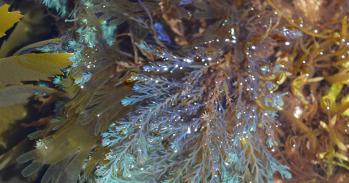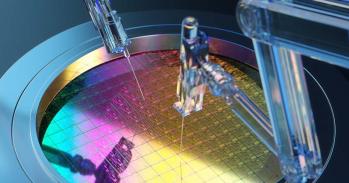
When Ghanaian Abu Yaya wondered why his country imports all of its electroporcelain – a small but crucial component for electrical power transmission – it led to a collaboration with Cambridge materials scientist Kevin Knowles that might one day result in Ghana being able to reduce its frequent blackouts.
When Ghanaian Abu Yaya wondered why his country imports all of its electroporcelain – a small but crucial component for electrical power transmission – it led to a collaboration with Cambridge materials scientist Kevin Knowles that might one day result in Ghana being able to reduce its frequent blackouts.
So I asked myself why can’t we make these products – and that is how I ended up in Cambridge"
Abu Yaya
In Ghana, ‘Dumsor’ is a part of life. An annoyance, a risk, an impediment to be sure, but a part of life all the same.
The half-joking, half-serious term, which roughly translates to ‘off-and-on’, refers to the frequent blackouts in the country. Entire neighbourhoods go dark in an instant. The patchwork electrical grid can leave one side of a street in darkness and the other fully lit. So widespread are the blackouts that John Mahama, until recently the country’s President, was often referred to as ‘Mr Dumsor’ by Ghanaians.
Like many countries in sub-Saharan Africa, Ghana doesn’t produce enough power to meet demand. Its power supply has been erratic since the early 2000s, when water levels in the Akosombo Dam, the country’s main hydroelectric dam, dropped to dangerously low levels, and they have yet to recover fully. Although Ghana has one of the highest rates of access to electricity in Africa, in 2015 the country still experienced blackouts on 159 days.
“Ghana’s not so different from the UK, really – both countries have an electrical grid that’s under enormous strain,” says Dr Kevin Knowles of Cambridge’s Department of Materials Science and Metallurgy. “The difference is we’d be up in arms if the lights went out all the time, whereas in Ghana it’s just a fact of life. But there are things that researchers in Ghana are doing to help improve the electrical infrastructure.”
One such researcher is Dr Abu Yaya, Head of the Department of Materials Science and Engineering at the University of Ghana. Yaya has been working with Knowles with the aim of developing a home-grown industry back in Ghana to make a small but crucial component for power transmission: electroporcelain.
For electricity to get from the places where it is generated, such as the Akosombo Dam, to homes and businesses, it needs a well-established electrical grid made up of pylons, substations and transmission lines. Whereas high-voltage power lines are insulated by the surrounding air, a physical insulator is required at the point where the power lines are supported by utility poles or transmission towers, or where power lines enter buildings. These insulators prevent the loss of current and concentrate its flow, as well as help prevent electric shock.
Most insulators for high-voltage power transmission are made from glass or porcelain. Knowles describes the electroporcelain manufacturing industry as “mature”. In fact, in the UK it’s been around since the 1860s – a reason perhaps why the insulators can look curiously old-fashioned and incongruous, like small white ceramic bowls or brown spiral candlesticks perched on the arms of pylons.
However, despite the prevalence of raw materials to make electroporcelain in Ghana, electroporcelain ceramics are imported from other countries at great expense.
Ghana’s not so different from the UK, really – both countries have an electrical grid that’s under enormous strain. The difference is we’d be up in arms if the lights went out all the time, whereas in Ghana it’s just a fact of life
Kevin Knowles
It’s a frustrating situation says Yaya, who has now developed a method of making electrical insulators out of the materials available in Ghana. His aim is to scale up the process for commercial use in the country, and possibly to other sub-Saharan countries as well. The process is economical because all it needs is the raw materials, water and a furnace.
Yaya grew up in the slums in Nima, a suburb of Accra in Ghana. After completing his undergraduate studies in his home country, he received funding from the European Union to complete his Master’s degree in materials science at the University of Aveiro, Portugal, and the University of Aalborg, Denmark, and his PhD at the University of Nantes, France, after which he returned home to take up a post at the University of Ghana.
It was when he returned to Ghana that Yaya first became interested in developing electroporcelain, after a discussion with a retired lab technician who had a stockpile of clays and feldspar, but wasn’t sure what to do with it. “I figured out the clays and feldspar could be used to make electroporcelain, and at the same time I realised that Ghana imports all of its electroporcelain from Asian countries,” he says. “So I asked myself why can’t we make these products – and that is how I ended up in Cambridge.”
In 2015, Yaya won a six-month CAPREx fellowship at Cambridge to work with Knowles, an expert in materials for use in challenging engineering environments. Most of Knowles’ research focuses on how small changes to the microstructure of materials can improve their mechanical, electronic or optical properties for use in components such as connecting rods, fan blades, glass and fuel cells.
“In electroporcelain, the raw materials are clay, feldspar and silica,” explains Knowles. “When these raw materials are mixed together in the right proportions and fired together, at a temperature such as 1,200°C, an electrical insulator is produced. What happens during firing is that the feldspar melts and this helps to bind the particles together inducing further chemical reactions and reducing porosity. The result is a dense product that can be given a surface glaze to enable it to pass national safety standards tests for porcelain insulators.”
Yaya adds: “Normally, imported electroporcelains are made to suit the original country’s specifications, and are not made specifically for Ghana or other African countries, where the climatic conditions could vary. By producing these products in Ghana using local raw materials, they are subjected to our own environmental conditions.
They would be sent to the Ghana Standards Authority for further testing to ensure that failure does not occur rapidly when the electroporcelains are in use.”
Dumsor is an irritation at times but it also shows the power crisis we must overcome
Abu Yaya
As well as working closely with Knowles, Yaya has also spent time working with UK-based company Almath Crucibles to optimise his process. His aim from the outset was to develop a manufacturing process for electroporcelain that would meet international standards so it can be sold to Ghana’s electricity company.
It’s a crucial time for Ghana, which has committed itself to universal electricity access by 2020. Making sure the electricity supply is widely available and reliable will aid the growth of industries and the economic development of the country. It will also support the demand for power by an increasing population.
“If we are able to manufacture insulators in Ghana then they will be far more affordable than imported insulators, and we stand a better chance of expanding our electrical infrastructure to improve capacity,” explains Yaya. Meanwhile, foreign investors are beginning to take notice of Ghana’s richness in materials: in August 2016, a Chinese-owned company opened the first phase of a US$60m factory in the Free Zone in Eshiem in Ghana to manufacture floor tiles and other ceramic products to supply domestic and international ceramics markets.
Yaya continues to collaborate with Knowles, as well as with other researchers in Europe. He is currently in the process of patenting his technique through a University of Ghana Technology Transfer Grant, and is now looking for potential commercial partners to help him bring the technology from a laboratory to an industrial scale.
“Dumsor is an irritation at times but it also shows the power crisis we must overcome,” he says. “We need to be sure that limitations in generating and distributing electricity do not become a development challenge for the country.
Dr Abu Yaya is at the University of Ghana. His research with Dr Kevin Knowles was funded by the Cambridge-Africa Partnership for Research Excellence (CAPREx) and The ALBORADA Trust, through the Cambridge-Africa Programme.
To keep up to date with the latest stories about Cambridge’s engagement with Africa, follow #CamAfrica on Twitter.

The text in this work is licensed under a Creative Commons Attribution 4.0 International License. For image use please see separate credits above.




